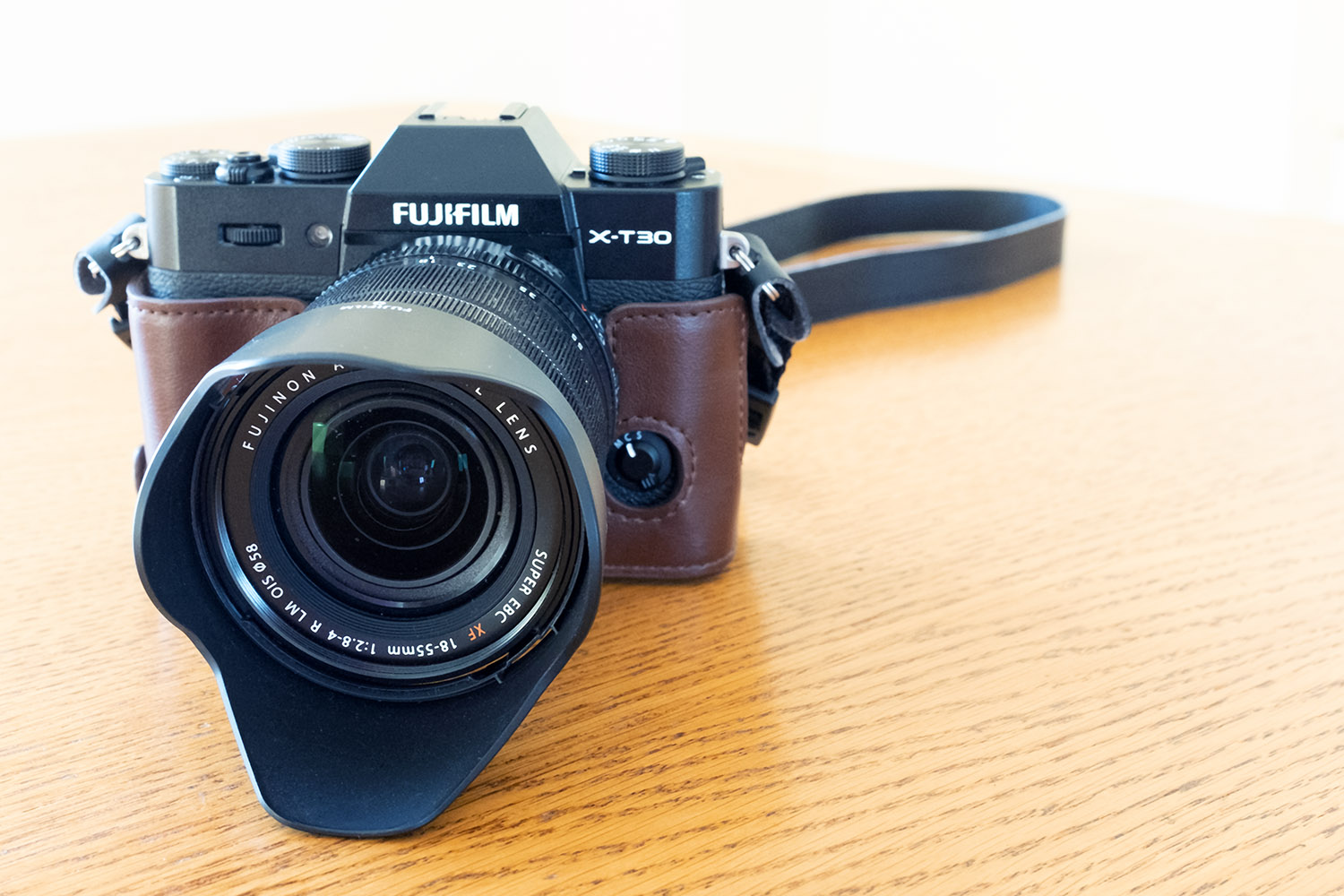
In 2004, I bought my first dSLR, a Nikon D70. Four years later, I purchased the Nikon D300; both these cameras featured an APS-C sensor. in 2014, I went to a full-frame dSLR with the Nikon D750. And now, after 15 years of shooting with Nikon dSLRs, I got rid of all my equipment and went with the Fujifilm X system, back to an APS-C sensor. Don't get me wrong: I love Nikon! I think Nikon cameras and lenses are great, but I just couldn't handle them any longer. The reason? Weight.
For a number of years, I had been using a hand strap because my neck would no longer put up with the combined weight of camera and lens; the D750 with the lens I used most often, the Nikkor 28-300mm, weighed 1.550 kilograms (3.42 lbs.). When the mirrorless Nikon Z6 was released in late 2018, I checked it out, but when I picked up the camera, my first impression was that it was pretty heavy. Indeed, the Z6 weighs just 75 grams (2.65 oz.) less than the D750, and since both cameras use a full-size sensor, the lenses are bound to be similar in weight. It became clear that I needed to go back to a smaller sensor to get rid of a meaningful amount of weight.
In March of 2013, I had gotten a Fujifilm X100s fixed lens camera, and I absolutely loved it. To be sure, the inability to zoom and change lenses is limiting, but the camera is a delight to pick up and use. Dials replace many electronic controls and menu options, and the picture quality from the 16 megapixel APS-C sensor is great, including out-of-camera JPEGs. The camera and its built-in lens weigh only 445 grams (just under one pound), so it is an extremely easy piece of equipment to bring on various outings. In fact, it has been my camera of choice when I didn't feel like dealing with the size and weight of the D750 and its lenses. The Fujifilm was also easy enough to bring along even when my other gear accompanied me.
It's no wonder, then, that I began looking at Fujifilm as an alternative to my existing Nikon system. After some research, I chose the Fujifilm X-T30, initially with an 18-55mm lens (equivalent to a 27-82mm lens on a full-frame camera). This combination weighs a mere 693 grams (1.53 lbs.), almost two pounds less than the D750 with the 28-300mm Nikkor lens. Of course, the reach is not the same, so I had to purchase a 55-200mm lens (82-300mm equivalent on a full-frame sensor camera). True, it takes two lenses to cover the range of the Nikkor, but picture quality and luminosity are better at every focal length.
Click on any image to see a larger (2100 x 1400 pixel) version!

|
Fujifilm X-T30 |
Fujifilm X100s, ISO 3200, 1/50, ƒ/8, exp. comp. +2 |
So, my gear weighs less, but just how good is it? As stated above, I've been using the X100s for over six years now, and picking it up still gives me the same sense of pleasure it did when it was new. In August of 2019, it was the only camera I took on a trip to Switzerland; looking at the photos, it seems clear that it held its own. By September, I had received the X-T30 with the 18-55mm lens; it's what I took with me on our trip to Ireland. At this time, the photos of that journey as well as those of a one day trip to Toulon are the only ones on this site that were taken with the X-T30. This will change soon, particularly as I now also have the 55-200mm telephoto zoom lens in my kit. The evening sky image below is a sample photo shot at 200mm. I still need to replace my Nikkor 15-36mm wide angle zoom (with the Fujinon 10-24mm). This will be done in due time.
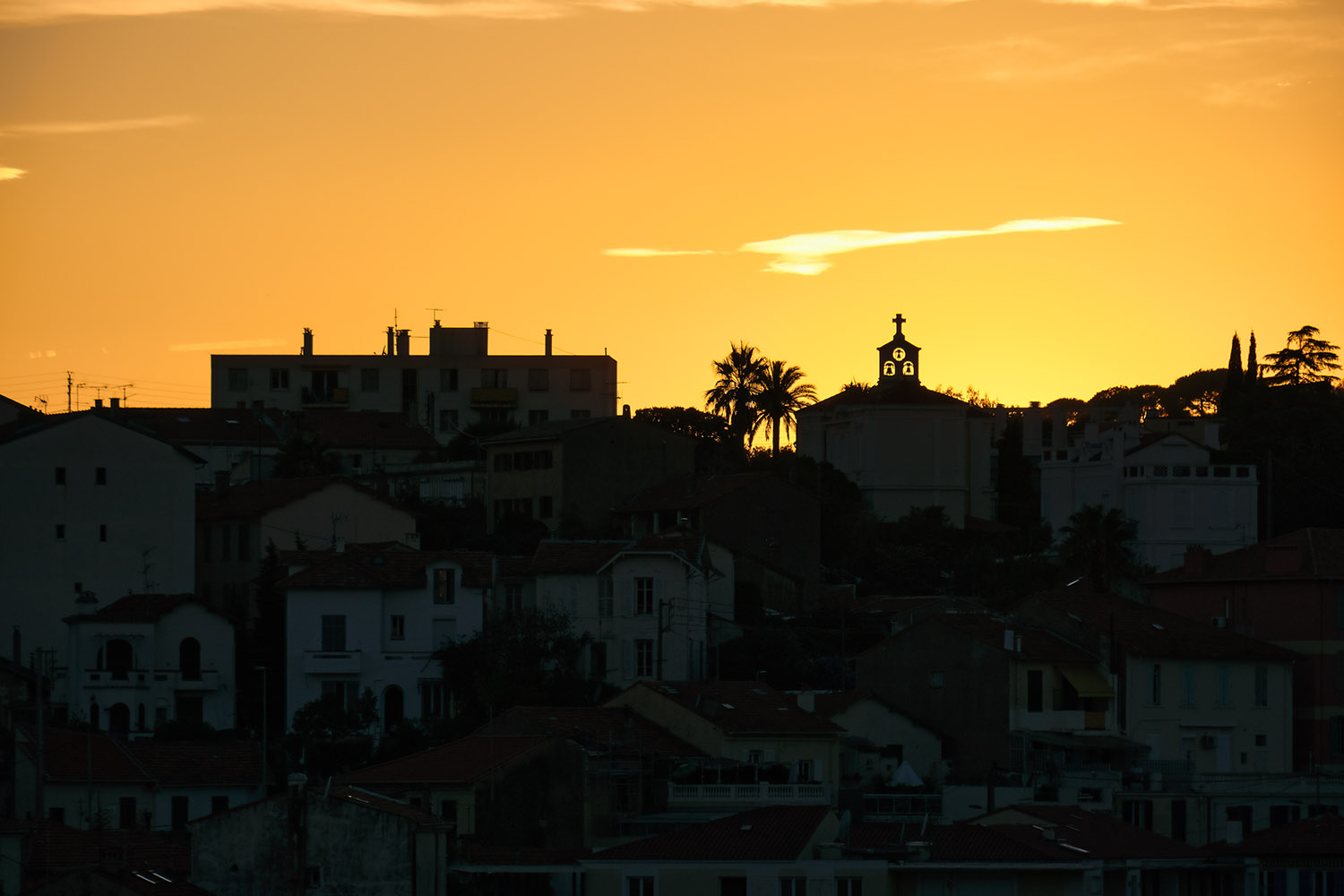
|
Evening sky over St. Joseph's church, Cannes |
Fujifilm X-T30, ISO 320, 1/1100, ƒ/8, exp. comp. -2⅓ |
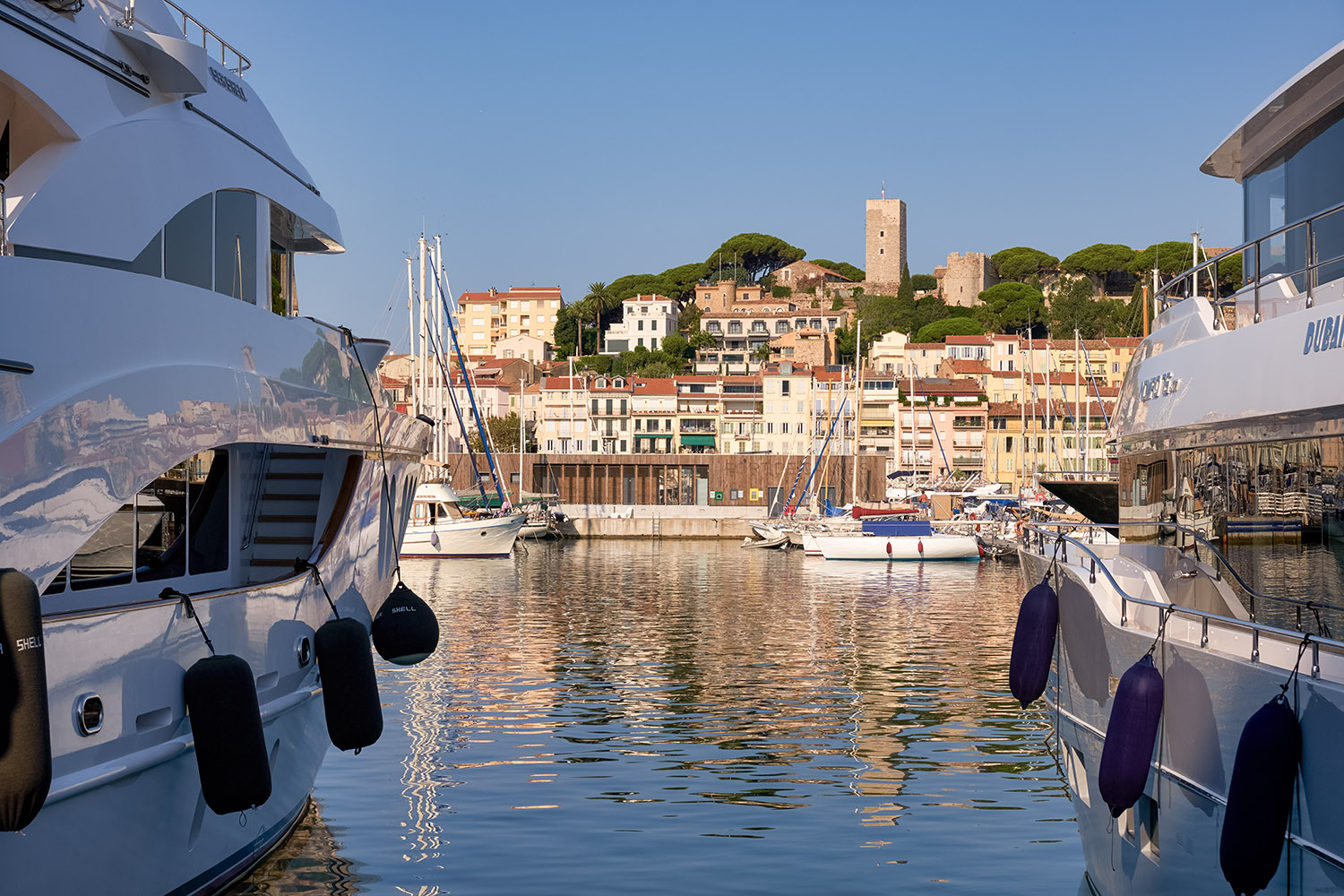
|
Le Suquet seen from the old harbor, Cannes |
Fujifilm X-T30, ISO 160, 1/550, ƒ/8, exp. comp. 0 |
I couldn't be happier with the switch to the Fujifilm X System. In many ways, this downsizing turned out to be an upgrade, simply because in terms of technical evolution, five years is a very long time, and the X-T30 is five years younger than the D750. To name just a couple of examples, autofocus is phenomenal on the X-T30. I took this video clip in a rather dark venue in Dublin, focusing on the eye of the violin player. As I recorded, I could see the tiny green square of the autofocus system track the eye of the performer who was far from immobile. Stabilization is excellent as well, even though it cannot have helped that my leg was moving rhythmically with the music during the recording. Another thing I could mention is that the X-T30 doesn't have to fear comparison with the D750 in the area of noise when shooting at high ISO values, even though it packs more pixels into a smaller sensor. Here, too, improvements were made during the last five years. But this is not meant to be an evaluation of the Fujifilm X-T30; if that's what you are after, you can find many reviews on YouTube. I just have to say that there is something about Fujifilm cameras that makes them extremely appealing to photographers, particularly to those who began shooting with film-based cameras.
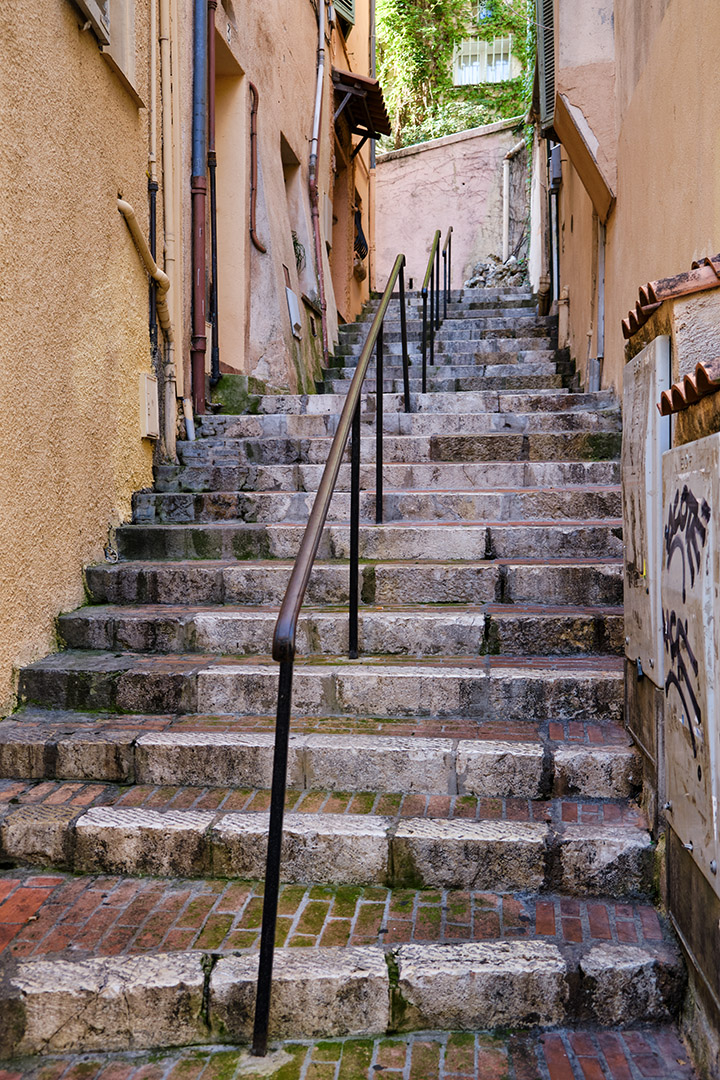
|
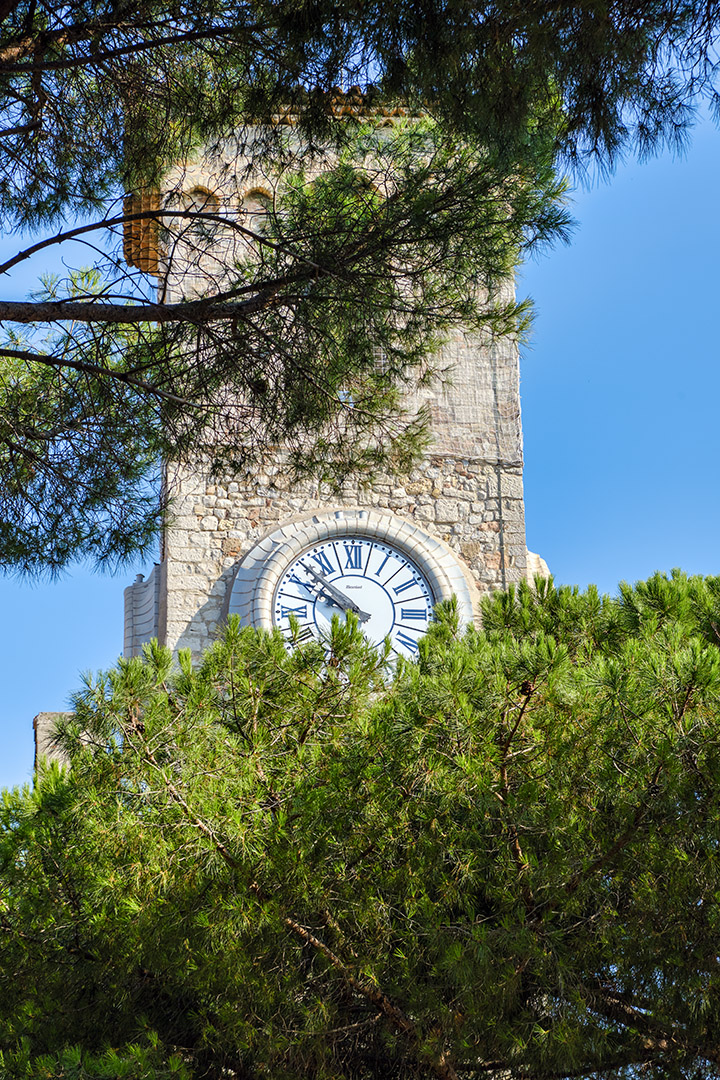
|
Le Suquet, rue Panisse • X-T30, ISO 160, 1/90, ƒ/3.6 |
Le Suquet, the clock tower • X-T30, ISO 160, 1/350, ƒ/5.6 |
Other than the pages mentioned above and those on which the Fujifilm X100s was used in conjunction with a Nikon dSLR, there are several pages on this site which were exclusively done with the small camera. This is a partial list of such pages:
Among other things, Fujifilm cameras are famous for the quality of the JPEG images they produce; in many situations, it is not necessary to shoot in raw. Users do not merely choose to shoot in JPEG; rather, they select one of several film simulations depending on the subject matter. For vivid colors under bright light, Velvia is perfect, while for a more conservative approach under overcast skies, Provia (the default) is an excellent choice. All in all, there are about a dozen choices available, including two black and white ones for each of which it is possible to specify a yellow, green, or red filter.
Before getting the X-T30, I shot almost exclusively in raw with the X100s. I am indebted to Alaska-based professional photographer Dan Bailey because it is through his web site, books, and webinars that I began exploring the JPEG potential of the Fujifilm X cameras. If you are a Fujifilm shooter, you should check out Dan's eBook X Series Unlimited, subtitled "a comprehensive guide for mastering techniques and maximizing creativity with your Fujifilm camera." I find it to be an invaluable resource.
On Christmas morning 2019, my alarm clock went off at 6 a.m. because I wanted to be on Farrington Road by Jordan Lake at daybreak. Here is a JPEG image shot there at 7:12 a.m., 13 minutes before sunrise, using the Provia simulation. I reduced the image from its original size of 6,240 x 4,160 in Adobe Photoshop. Except for this resizing, this is a straight out-of-camera JPEG without any post-processing.
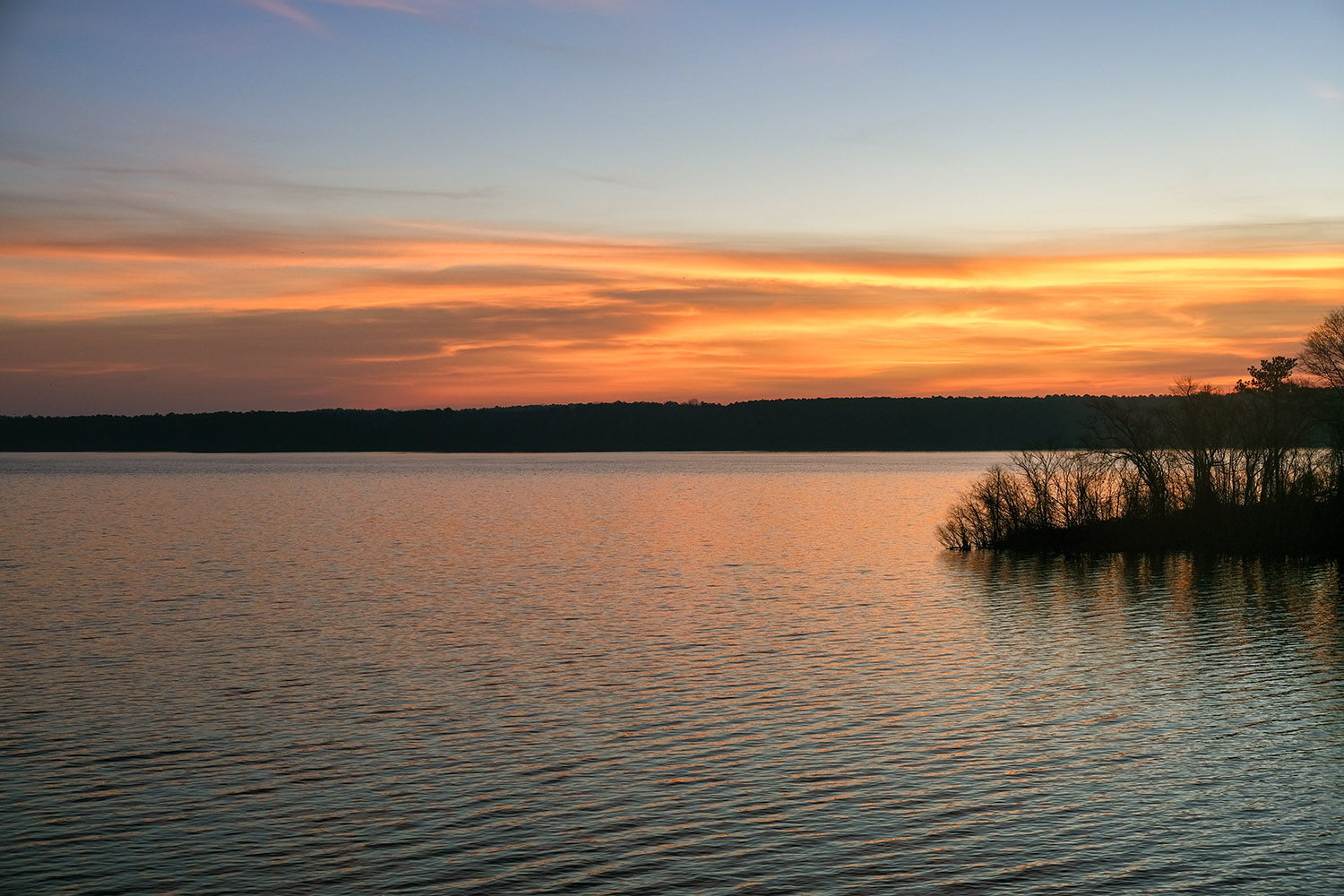
|
Christmas morning at Jordan Lake, Chapel Hill, NC |
Fujifilm X-T30, ISO 320, 1/140, ƒ/5.6, exp. comp. -⅔ |
As you can see, for some of the images on this page, I dialed in an exposure compensation. This is yet another advantage of a camera like the X-T30: changes made to exposure, film simulation, white balance, and other parameters may be seen in the viewfinder or on the LCD screen before the shutter is released. It is not necessary to first take the picture to know how it will turn out: what you see is definitely what you get. From now on, all new digital photos published on this web site will be captured with one of my Fujifilm cameras. Undoubtedly, I will also continue to use my film-based cameras. In particular, I want to shoot a bit more with the remarkable 1975 Nikkormat FT2.
Home | Site Info | Family | The Area | Trips | France | Work | Rants | Photography | Odds & Ends
This page was last modified on January 1, 2020
Send feedback about this page to feedback@kiechle.com
https://www.kiechle.com/photography/downsizing/index.htm
(optimized for Retina display)
All contents © 1999-2025 The Kiechles